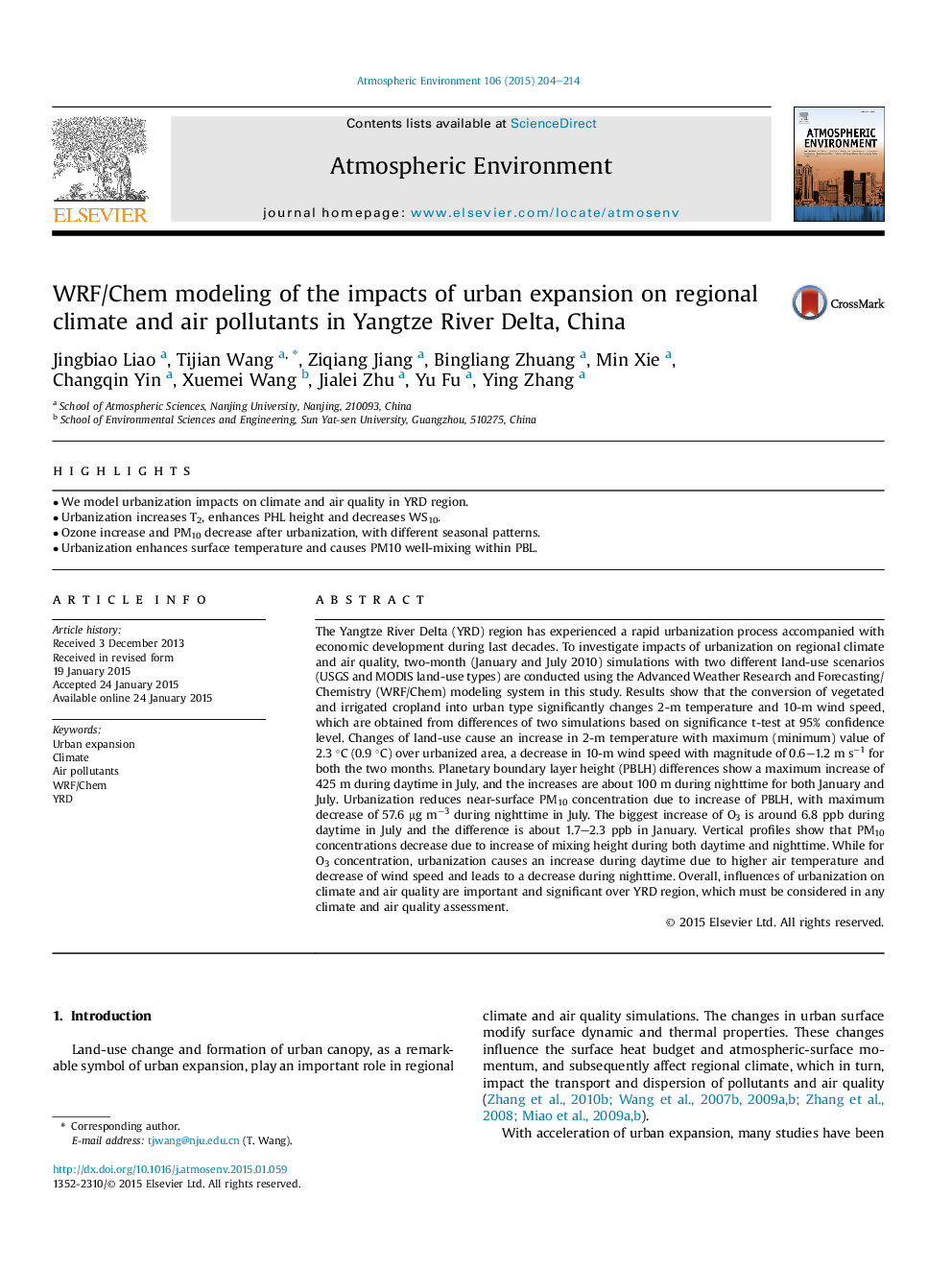| کد مقاله | کد نشریه | سال انتشار | مقاله انگلیسی | نسخه تمام متن |
|---|---|---|---|---|
| 6338293 | 1620365 | 2015 | 11 صفحه PDF | دانلود رایگان |

- We model urbanization impacts on climate and air quality in YRD region.
- Urbanization increases T2, enhances PHL height and decreases WS10.
- Ozone increase and PM10 decrease after urbanization, with different seasonal patterns.
- Urbanization enhances surface temperature and causes PM10 well-mixing within PBL.
The Yangtze River Delta (YRD) region has experienced a rapid urbanization process accompanied with economic development during last decades. To investigate impacts of urbanization on regional climate and air quality, two-month (January and July 2010) simulations with two different land-use scenarios (USGS and MODIS land-use types) are conducted using the Advanced Weather Research and Forecasting/Chemistry (WRF/Chem) modeling system in this study. Results show that the conversion of vegetated and irrigated cropland into urban type significantly changes 2-m temperature and 10-m wind speed, which are obtained from differences of two simulations based on significance t-test at 95% confidence level. Changes of land-use cause an increase in 2-m temperature with maximum (minimum) value of 2.3 °C (0.9 °C) over urbanized area, a decrease in 10-m wind speed with magnitude of 0.6-1.2 m sâ1 for both the two months. Planetary boundary layer height (PBLH) differences show a maximum increase of 425 m during daytime in July, and the increases are about 100 m during nighttime for both January and July. Urbanization reduces near-surface PM10 concentration due to increase of PBLH, with maximum decrease of 57.6 μg mâ3 during nighttime in July. The biggest increase of O3 is around 6.8 ppb during daytime in July and the difference is about 1.7-2.3 ppb in January. Vertical profiles show that PM10 concentrations decrease due to increase of mixing height during both daytime and nighttime. While for O3 concentration, urbanization causes an increase during daytime due to higher air temperature and decrease of wind speed and leads to a decrease during nighttime. Overall, influences of urbanization on climate and air quality are important and significant over YRD region, which must be considered in any climate and air quality assessment.
Journal: Atmospheric Environment - Volume 106, April 2015, Pages 204-214